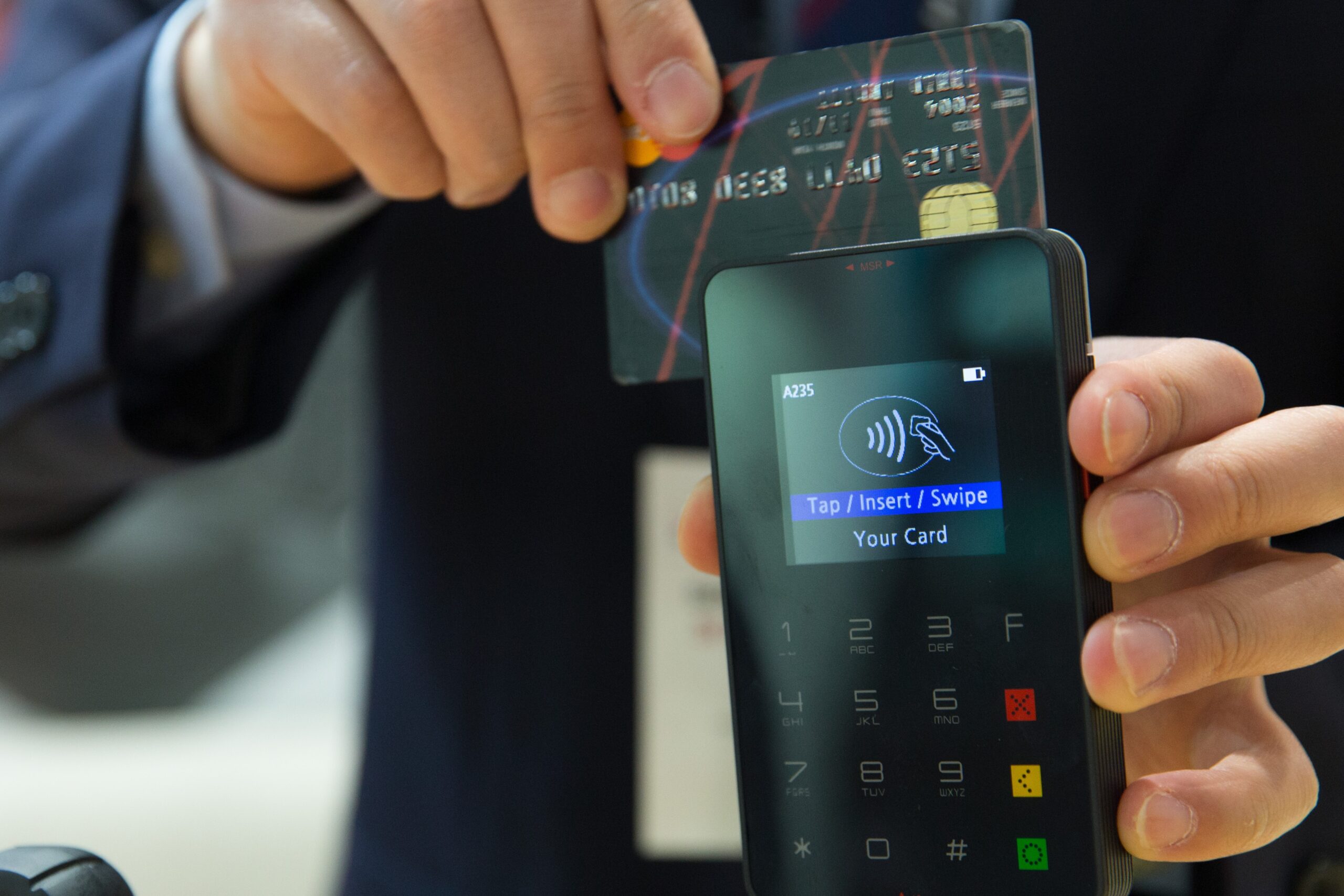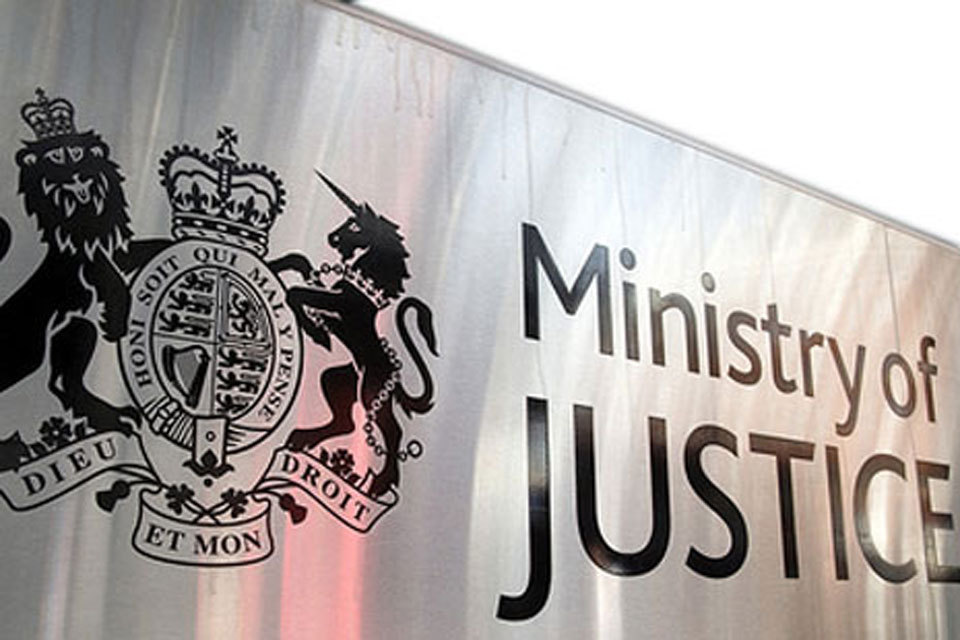Department reveals details of proof of concept exercise through which it will investigate viability of introducing automated payment of goods tax, and how this could impact the future tax system
HM Revenue and Customs is undertaking a £1-m plus 18-month project aimed at better understanding whether technology could enable VAT payments could be split out in real time and sent straight to the tax agency.
The department has revealed details of a proof-of-concept exercise intended to “prove the technical feasibility of splitting digital retail payments to capture VAT directly”, according to commercial documents.
The potential implementation of an automated system would mean that “when qualifying goods or services are bought, the VAT within the purchaser’s payment could be routed to HMRC and the seller only receives the net amount”.
Most goods and services sold to UK consumers include an in-built tax of 20% meaning that, for every £100 spent, £16.67 ends up going to the exchequer with £83.33 ultimately being kept by the retailer.
To explore the feasibility of introducing a system for automatically sending these amounts to their respective recipients at the point of payment – and how doing so might affect tax policy and administration in the future – in late August HMRC entered into a £1.2m contract with payments technology Streeva. The UK-based firm has previously developed a platform designed to help charities automatically collect Gift Aid tax relief retrospectively. Its deal with HMRC runs until 31 January 2025.
Related content
- ‘We do not want it to be a hardship to contact us’ – how HMRC hopes to use AI and analytics to transform customer service
- HMRC IT spend tops £1.1bn in FY23 in drive to ‘modernise infrastructure’
- HMRC retains £6m support for digital tax platform
During that time, it will work with the department to explore how its technology – or something similar – could be used to directly extract VAT payments for goods bought by UK residents from overseas sellers not currently complying with their VAT responsibilities. The experiment, which will make use of simulated data sets intended to reflect real-life transactions, will cover both card payments and those made by bank transfer or digital wallets.
If the proof of concept demonstrates sufficient potential in the context of collecting VAT from overseas entities, HMRC the exercise “would begin to inform whether or not a first potential use for split payment in the UK is viable [and] could then also help shape future tax modernisation efforts, [such as] automated software which could link businesses, payments intermediaries and HMRC”, according to the text of the contract.
HMRC believes that any such point-of-sale means of directly collecting VAT “would be driven by either payments system messages – [such as] the location of a seller or a buyer – or new data sources, [such as] product codes, e-invoices or equivalent”.
“Currently, as far as we are aware, there are no marketed solutions available, and we are not aware of others asking the market to develop such solutions,” the contract adds.
The project will be split into three phases, the first of which aims to demonstrate whether splitting systems can deliver the “basic capability… to intuit and discern” from the available data that a transaction is VAT-taxable – and then to apply the relevant split to the payment.
The second phase will focus on the technology’s ability to infer from payment data whether or not the seller is complying with their VAT duties, and then collate this information for HMRC use.
If and when this capability has been proven, the department also wishes to investigate whether technology could potentially “extract the tax from a payment before that payment leaves the regulatory jurisdiction in which the buyer is resident… [which], in a UK context means a mechanism that can make a splitting intervention for VAT before the monies are transmitted overseas to a sellers’ deposit account”.
The final phase of the exercise – which HMRC believes will account for the majority of its work with Streeva – will explore ways in which greater sophistication could be built in to a splitting system, including the use of external data sources to inform decisions.
The ultimate aim of this work will be to understand how such a system’s “capability might be further developed for real-time collection of VAT [or] general sales tax – by tax authorities around the world”.
Beyond the fundamental technical feasibility of introducing technology that could deliver these capabilities, the proof of concept seeks to understand the extent to which an automated VAT-collection system “would be interoperable with existing and any foreseeable future payments networks or systems. The exercise will also consider whether the automatic splitting could have a negative impact on payment-processing speeds, or cause any complications when issuing refunds.
The exploratory project takes place against a backdrop where various countries – but not the UK – automatically collect value-added or sales taxes via “through legislatively mandated interventions on payments”, according to the contract.
“Overlaying such technology on the UK VAT system would not be possible without first addressing a wide range of complex policy questions and understanding the full potential of any such technology,” the document adds. “In order to test the potential of the technology, our initial focus is on exploring the feasibility of splitting payments in a specific area of VAT for goods and services bought by UK consumers from non-compliant overseas sellers. This will test a range of capabilities, including the technology’s ability to know when VAT is chargeable or not. Also, whether an intervention can be made without the consent of the seller or buyer, something that, as far as we are aware, known examples of split payment are unable to do.”
Commercial documents indicate that the main supplier Streeva will work with three subcontractors: digital government specialist Public; professional services firm EY; and the University of Portsmouth.





https://oragoda.tistory.com/entry/개인택시-자격완화와-시세-양수교육
https://oragoda.tistory.com/entry/스승찾기-전국-교육청-선생님-찾기-사이트-안내
수원출장샵
Hola Bulma OnlyFans Mega Link Download ( Visit https://archiver.fans )
Rebecca J OnlyFans Mega Link Download ( Visit https://archiver.fans )
https://madreviewer.tistory.com/entry/EC98A4EBAFB8ED81ACEBA1A0-ECA69DEC8381-EC889CEC849C-EBACB4ECA1B0EAB1B4-ED9995EC9DB8
Hola Bulma OnlyFans Mega Link Download ( Visit https://archiver.fans )
Updated Only Fans Leaks ( Visit https://archiver.fans )
Buy Only Fans Leaks ( Visit https://archiver.fans )
Mulan Hernandez OnlyFans Mega Link Download ( Visit https://archiver.fans )
Emmanuel Lustin OnlyFans Mega Link Download ( Visit https://archiver.fans )
Mikaila Dancer OnlyFans Mega Link Download
Rubi Rose OnlyFans Mega Link Download
GG With The WAP OnlyFans Mega Link Download
3TB Only Fans Mega
Buy Leaked Only Fans ( Visit https://archiver.fans )
Bulma XO OnlyFans Mega Link Download
Crii Baby RiRi OnlyFans Mega Link Download ( Visit https://archiver.fans )
벼룩시장 신문그대로보기 (구인구직, 부동산) 벼룩시장 신문그대로보기 바로가기 그리고 지역별 벼룩시장 종이신문그대로보기 방법 (구인구직, 부동산) 알아볼게요. 교차로신문 같이 벼룩시장은 지역별 일자리, 구인구직, 부동산 등 다양한 정보를 제공해요. 교차로신문그대로보기 바로가기는 아래에서 확인하고, 오늘은 벼룩시장 신문그대로보기 바로가기 그리고 사용법 섹스카지노사이트
벼룩시장 신문그대로보기 (구인구직, 부동산) 벼룩시장 신문그대로보기 바로가기 그리고 지역별 벼룩시장 종이신문그대로보기 방법 (구인구직, 부동산) 알아볼게요. 교차로신문 같이 벼룩시장은 지역별 일자리, 구인구직, 부동산 등 다양한 정보를 제공해요. 교차로신문그대로보기 바로가기는 아래에서 확인하고, 오늘은 벼룩시장 신문그대로보기 바로가기 그리고 사용법 섹스카지노사이트
벼룩시장 신문그대로보기 (구인구직, 부동산) 벼룩시장 신문그대로보기 바로가기 그리고 지역별 벼룩시장 종이신문그대로보기 방법 (구인구직, 부동산) 알아볼게요. 교차로신문 같이 벼룩시장은 지역별 일자리, 구인구직, 부동산 등 다양한 정보를 제공해요. 교차로신문그대로보기 바로가기는 아래에서 확인하고, 오늘은 벼룩시장 신문그대로보기 바로가기 그리고 사용법 섹스카지노사이트
Im xXx Dark OnlyFans Mega Link Download ( Visit https://archiver.fans )
Mulan Hernandez OnlyFans Mega Link Download ( Visit https://archiver.fans )
10TB Only Fans Mega ( Visit https://archiver.fans )
Free Only Fans Leaks ( Visit https://archiver.fans )
Daalischus Rose OnlyFans Mega Link Download
Only Fans Leaks Free Download
Im xXx Dark OnlyFans Mega Link Download ( Visit https://archiver.fans )
Lexi 2 Legit OnlyFans Mega Link Download
Rubi Rose OnlyFans Mega Link Download
Gina WAP OnlyFans Mega Link Download ( Visit https://archiver.fans )
Corinna Kopf OnlyFans Mega Link Download ( Visit https://archiver.fans )
Only Fans Leaks Updates
Mikaila Dancer OnlyFans Mega Link Download
Crii Baby RiRi OnlyFans Mega Link Download ( Visit https://archiver.fans )
Caaart OnlyFans Mega Link Download
Buy Fansly Leaks ( Visit https://archiver.fans )
Buy Only Fans Leaks ( Visit https://archiver.fans )
Daalischus Rose OnlyFans Mega Link Download
Taylor Hall OnlyFans Mega Link Download
Buy Leaked Content ( Visit https://archiver.fans )
Only Fans Leaks Mega Folders
Its Lunar Liv OnlyFans Mega Link Download
Yasmine Lopez OnlyFans Mega Link Download ( Visit https://archiver.fans )
Today, I went to the beachfront with my children. I found a sea shell and gave it to my 4 year old daughter and said “You can hear the ocean if you put this to your ear.” She put the shell to her ear and screamed. There was a hermit crab inside and it pinched her ear. She never wants to go back! LoL I know this is entirely off topic but I had to tell someone!
Taylor Hall OnlyFans Mega Link Download
Leah Mifsud OnlyFans Mega Link Download ( Visit https://archiver.fans )
Hi, i think that i saw you visited my blog so i came to 搑eturn the favor?I’m trying to find things to improve my site!I suppose its ok to use a few of your ideas!!
Mega Link Shop ( Visit https://archiver.fans )
Buy Mega Links ( Visit https://archiver.fans )
Only Fans Leaks Updates
Caaart OnlyFans Mega Link Download
Mulan Hernandez OnlyFans Mega Link Download ( Visit https://archiver.fans )
Leah Mifsud OnlyFans Mega Link Download ( Visit https://archiver.fans )
Ima Cri Baby OnlyFans Mega Link Download ( Visit https://archiver.fans )
Hola Bulma OnlyFans Mega Link Download ( Visit https://archiver.fans )
Caaart OnlyFans Mega Link Download
Buy Fansly Leaks ( Visit https://archiver.fans )
Leah Mifsud OnlyFans Mega Link Download ( Visit https://archiver.fans )
Mega Link Store
Corinna Kopf OnlyFans Mega Link Download ( Visit https://archiver.fans )
Only Fans Leaks Updates
10TB Only Fans Mega ( Visit https://archiver.fans )
Jenise Hart OnlyFans Mega Link Download
I have acquired some new elements from your web site about computer systems. Another thing I have always presumed is that laptop computers have become something that each house must have for most reasons. They supply you with convenient ways in which to organize homes, pay bills, shop, study, hear music as well as watch shows. An innovative approach to complete these types of tasks is with a notebook computer. These computers are mobile, small, effective and convenient.
Genesis Mia Lopez OnlyFans Mega Link Download
North Natt OnlyFans Mega Link Download
여행지
Mega Link Shop ( Visit https://archiver.fans )
Yasmine Lopez OnlyFans Mega Link Download ( Visit https://archiver.fans )
Corinna Kopf OnlyFans Mega Link Download ( Visit https://archiver.fans )
하동동해출장만남 소자본 창업
Mikaila Dancer OnlyFans Mega Link Download
울산콜걸
Barely Legal Lexi OnlyFans Mega Link Download
Yasmine Lopez OnlyFans Mega Link Download ( Visit https://archiver.fans )
Write more, thats all I have to say. Literally, it seems as though you relied on the video to make your point. You clearly know what youre talking about, why waste your intelligence on just posting videos to your weblog when you could be giving us something informative to read?
GG With The WAP OnlyFans Mega Link Download
Only Fans Leaks Mega Folders
하동동해출장만남 소자본 창업
There is perceptibly a lot to identify about this. I believe you made some nice points in features also.
전신스타킹
Hot 4 Lexi OnlyFans Mega Link Download ( Visit https://archiver.fans )
Buy Fansly Leaks ( Visit https://archiver.fans )
Updated Only Fans Leaks ( Visit https://archiver.fans )
I have been exploring for a little for any high-quality articles or blog posts on this kind of area . Exploring in Yahoo I at last stumbled upon this website. Reading this information So i am happy to convey that I have a very good uncanny feeling I discovered just what I needed. I most certainly will make sure to don抰 forget this web site and give it a look on a constant basis.
Gina WAP OnlyFans Mega Link Download ( Visit https://archiver.fans )
Ima Cri Baby OnlyFans Mega Link Download ( Visit https://archiver.fans )
Taylor Hall OnlyFans Mega Link Download
Crii Baby RiRi OnlyFans Mega Link Download ( Visit https://archiver.fans )
North Natt OnlyFans Mega Link Download
Rebecca J OnlyFans Mega Link Download ( Visit https://archiver.fans )
Mulan Hernandez OnlyFans Mega Link Download ( Visit https://archiver.fans )
Daalischus Rose OnlyFans Mega Link Download
https://itgunza.com/299
3TB Only Fans Mega
https://itgunza.com/1455
One thing I’ve noticed is the fact there are plenty of fallacies regarding the finance institutions intentions while talking about home foreclosure. One fable in particular would be the fact the bank prefers to have your house. Your banker wants your dollars, not your home. They want the cash they loaned you together with interest. Preventing the bank will still only draw a foreclosed summary. Thanks for your post.
Only Fans Leaks Mega Folders
8TB Only Fans Mega ( Visit https://archiver.fans )
TheRealRebeccaJ OnlyFans Mega Link Download
Buy Leaked Only Fans ( Visit https://archiver.fans )
Mulan Hernandez OnlyFans Mega Link Download ( Visit https://archiver.fans )
Emmanuel Lustin OnlyFans Mega Link Download ( Visit https://archiver.fans )
Leah Mifsud OnlyFans Mega Link Download ( Visit https://archiver.fans )
Free Only Fans Leaks ( Visit https://archiver.fans )
Mikaila Dancer OnlyFans Mega Link Download
Caaart OnlyFans Mega Link Download
Bulma XO OnlyFans Mega Link Download
GG With The WAP OnlyFans Mega Link Download
Jenise Hart OnlyFans Mega Link Download
Ima Cri Baby OnlyFans Mega Link Download ( Visit https://archiver.fans )
Free Only Fans Leaks ( Visit https://archiver.fans )
https://nicesongtoyou.com/
Taylor Hall OnlyFans Mega Link Download
Buy Leaked Only Fans ( Visit https://archiver.fans )
Only Fans Leaks Free Download
Rubi Rose OnlyFans Mega Link Download
Only Fans Leaks Free Download
GinaSavageX OnlyFans Leaks Mega Folder Link Download ( https://CrocSpot.Fun )
NyNyIrene OnlyFans Leaks Mega Folder Link Download
GinaWAP Only Fans Leaks ( https://urbancrocspot.org/gina-wap-gg-with-the-wap-only-fans-mega-link-9gb/ )
Bombshell Mint OnlyFans Leaks ( https://urbancrocspot.org/the-real-bombshell-mint-only-fans-mega-link/ )
Bombshell Mint Porn ( https://urbancrocspot.org/the-real-bombshell-mint-only-fans-mega-link/ )
GinaWAP Only Fans PPVS Download https://urbancrocspot.org/tag/gg-with-the-wap/
The Real Bombshell Mint Only Fans Leaks ( https://UrbanCrocSpot.org/ )
The Real Bombshell Mint Only Fans Leaks ( https://UrbanCrocSpot.org/ )
MollyTheWorker OnlyFans Leaks Mega Folder Link Download
JusATeasee Naomi OnlyFans Leaks Mega Folder Link Download
GGWithTheWAP Only Fans PPVs ( https://urbancrocspot.org/gina-wap-gg-with-the-wap-only-fans-mega-link-9gb/ )
Tytiania Sargent Naked Only Fans ( https://UrbanCrocSpot.org/shop )
The Real Bombshell Mint ( https://urbancrocspot.org/the-real-bombshell-mint-only-fans-mega-link/ )
GinaWAP Mega Folder Link https://urbancrocspot.org/product-tag/gg-with-the-wap/
Would you be considering exchanging hyperlinks?
https://download-install.com/entry/EAB3B0EB85B9EC9D8CEAB8B0-EB8BA4EC9AB4EBA19CEB939C
I was curious if you ever thought of changing the structure of your blog? Its very well written; I love what youve got to say. But maybe you could a little more in the way of content so people could connect with it better. Youve got an awful lot of text for only having one or 2 pictures. Maybe you could space it out better?
https://mintfin.tistory.com/tag/나눔스퀘어20폰트20사용법
mexico drug stores pharmacies: buying prescription drugs in mexico online – Mexican Easy Pharm
medication from mexico pharmacy https://mexicaneasypharm.com/# Mexican Easy Pharm
mexican pharmaceuticals online
https://kamapharm.shop/# Kamagra 100mg
prednisone 300mg
https://semapharm24.shop/# semaglutide best price
prednisone without prescription.net
https://kamapharm.com/# Kama Pharm
100 mg prednisone daily
http://predpharm.com/# where can i get prednisone
prednisone sale
https://semapharm24.shop/# buy rybelsus online
20mg prednisone
https://predpharm.com/# can you buy prednisone
prednisone pill 20 mg
https://dappharm.com/# Priligy tablets
prednisone 20mg online pharmacy
https://dappharm.com/# Priligy tablets
purchase prednisone
https://dappharm.com/# cheap priligy
order prednisone from canada
http://predpharm.com/# Pred Pharm
prednisone pill 10 mg
http://dappharm.com/# buy dapoxetine online
purchase prednisone 10mg
https://dappharm.com/# priligy
prednisone 10 mg over the counter
https://cytpharm.com/# buy cytotec online
prednisone online pharmacy
https://predpharm.shop/# PredPharm
prednisone no rx
https://farmasilditaly.shop/# viagra consegna in 24 ore pagamento alla consegna
acquistare farmaci senza ricetta
http://farmasilditaly.com/# viagra online spedizione gratuita
farmacie online autorizzate elenco
https://farmasilditaly.com/# viagra subito
farmacie online sicure
https://farmabrufen.com/# FarmaBrufen
farmacia online
acquisto farmaci con ricetta: farmacia online – farmacie online autorizzate elenco
farmacie online affidabili https://farmaprodotti.com/# migliori farmacie online 2024
acquisto farmaci con ricetta
http://jugabet.xyz/# Las reservas en lГnea son fГЎciles y rГЎpidas.
Security measures ensure a safe environment.
Las experiencias son Гєnicas en cada visita.: jugabet.xyz – jugabet chile
Casinos offer delicious dining options on-site. https://taya777.icu/# Casino visits are a popular tourist attraction.
phtaya login phtaya casino Visitors come from around the world to play.
https://bestkkultip.tistory.com/15
https://phmacao.life/# Slot machines feature various exciting themes.
Slot tournaments create friendly competitions among players.
Las mГЎquinas tienen diferentes niveles de apuesta.: jugabet – jugabet casino
Players enjoy both fun and excitement in casinos. https://jugabet.xyz/# Los bonos de bienvenida son generosos.
http://taya777.icu/# The casino atmosphere is thrilling and energetic.
The gaming floors are always bustling with excitement.
I’m impressed, I must say. Really not often do I encounter a weblog that’s both educative and entertaining, and let me let you know, you could have hit the nail on the head. Your concept is excellent; the problem is one thing that not enough people are talking intelligently about. I’m very happy that I stumbled throughout this in my seek for one thing referring to this.
The gaming floors are always bustling with excitement.: taya365 com login – taya365
winchile casino winchile Los jackpots progresivos atraen a los jugadores.
High rollers receive exclusive treatment and bonuses. http://taya777.icu/# Poker rooms host exciting tournaments regularly.
http://phtaya.tech/# Responsible gaming initiatives are promoted actively.
Gambling regulations are strictly enforced in casinos.
https://winchile.pro/# Los casinos ofrecen entretenimiento en vivo.
Casinos offer delicious dining options on-site.
Los casinos garantizan una experiencia de calidad.: winchile.pro – winchile.pro
Loyalty programs reward regular customers generously. https://phtaya.tech/# The Philippines has several world-class integrated resorts.
https://phmacao.life/# Live dealer games enhance the casino experience.
Slot machines attract players with big jackpots.
win chile winchile Las promociones atraen nuevos jugadores diariamente.
Responsible gaming initiatives are promoted actively.: phmacao club – phmacao
Gambling regulations are strictly enforced in casinos. https://taya777.icu/# The poker community is very active here.
http://taya365.art/# The Philippines has a vibrant nightlife scene.
A variety of gaming options cater to everyone.
Players enjoy both fun and excitement in casinos.: phmacao – phmacao
Gambling regulations are strictly enforced in casinos. http://phtaya.tech/# Slot machines attract players with big jackpots.
http://phtaya.tech/# Resorts provide both gaming and relaxation options.
Online gaming is also growing in popularity.
phmacao phmacao.life The gaming floors are always bustling with excitement.
https://winchile.pro/# Muchos casinos tienen salas de bingo.
Online gaming is also growing in popularity.
п»їCasinos in the Philippines are highly popular.: phmacao club – phmacao
The ambiance is designed to excite players. http://taya365.art/# Loyalty programs reward regular customers generously.
http://jugabet.xyz/# La historia del juego en Chile es rica.
Cashless gaming options are becoming popular.
Hay reglas especГficas para cada juego.: jugabet casino – jugabet chile
Slot machines feature various exciting themes. http://taya365.art/# Live music events often accompany gaming nights.
phtaya phtaya casino Players must be at least 21 years old.
https://jugabet.xyz/# Los jugadores deben conocer las reglas.
Loyalty programs reward regular customers generously.
Los juegos de mesa son clГЎsicos eternos.: jugabet chile – jugabet casino
A variety of gaming options cater to everyone. https://taya365.art/# The poker community is very active here.
https://phtaya.tech/# Players often share tips and strategies.
Slot machines feature various exciting themes.
win chile win chile Hay reglas especГficas para cada juego.
Security measures ensure a safe environment.: taya777 register login – taya777.icu
https://jugabet.xyz/# Las reservas en lГnea son fГЎciles y rГЎpidas.
Casino visits are a popular tourist attraction.
Gaming regulations are overseen by PAGCOR. http://taya365.art/# Visitors come from around the world to play.
http://taya777.icu/# Gambling regulations are strictly enforced in casinos.
The casino experience is memorable and unique.
Online gaming is also growing in popularity.: phmacao.life – phmacao com
http://taya777.icu/# Security measures ensure a safe environment.
Gaming regulations are overseen by PAGCOR.
taya365 taya365 login Casino visits are a popular tourist attraction.
Casino promotions draw in new players frequently.: taya777 – taya777.icu
Los casinos son lugares de reuniГіn social.: winchile.pro – winchile
http://winchile.pro/# Los bonos de bienvenida son generosos.
Many casinos have beautiful ocean views.
The casino experience is memorable and unique.: phtaya login – phtaya.tech
https://jugabet.xyz/# Las apuestas deportivas tambiГ©n son populares.
Many casinos have beautiful ocean views.
A variety of gaming options cater to everyone.: taya365 com login – taya365
http://phmacao.life/# Cashless gaming options are becoming popular.
Promotions are advertised through social media channels.
Promotions are advertised through social media channels.: phmacao com login – phmacao com
Casinos offer delicious dining options on-site.: phmacao casino – phmacao.life
taya777 taya777 login High rollers receive exclusive treatment and bonuses.
Players enjoy both fun and excitement in casinos. https://phmacao.life/# Loyalty programs reward regular customers generously.
La pasiГіn por el juego une a personas.: win chile – winchile casino
https://doxbin.org/upload/JayceBradfordChildPredatorCPConnoisseur
https://doxbin.org/upload/JayceBradfordChildPredatorCPConnoisseur
La Г©tica del juego es esencial.: winchile – winchile
http://winchile.pro/# La mГєsica acompaГ±a la experiencia de juego.
Players enjoy both fun and excitement in casinos.
Loyalty programs reward regular customers generously.: phmacao – phmacao
phtaya phtaya casino The Philippines has a vibrant nightlife scene.
Live dealer games enhance the casino experience.: phmacao casino – phmacao com login
Many casinos offer luxurious amenities and services. https://phmacao.life/# Players often share tips and strategies.
Responsible gaming initiatives are promoted actively.: phmacao club – phmacao casino
https://winchile.pro/# Hay reglas especГficas para cada juego.
Manila is home to many large casinos.
La Г©tica del juego es esencial.: jugabet chile – jugabet
phmacao com phmacao Manila is home to many large casinos.
http://jugabet.xyz/# La mГєsica acompaГ±a la experiencia de juego.
Players enjoy a variety of table games.